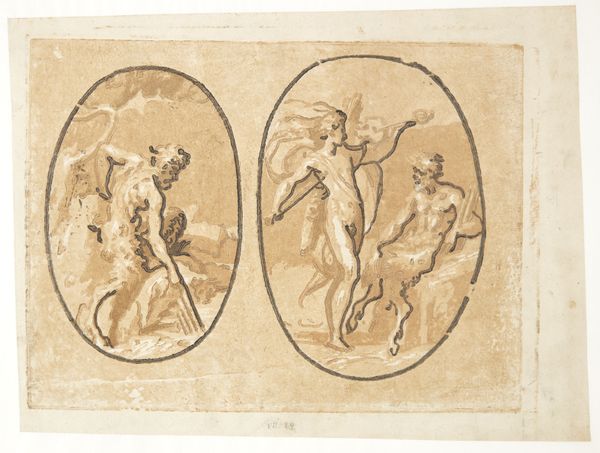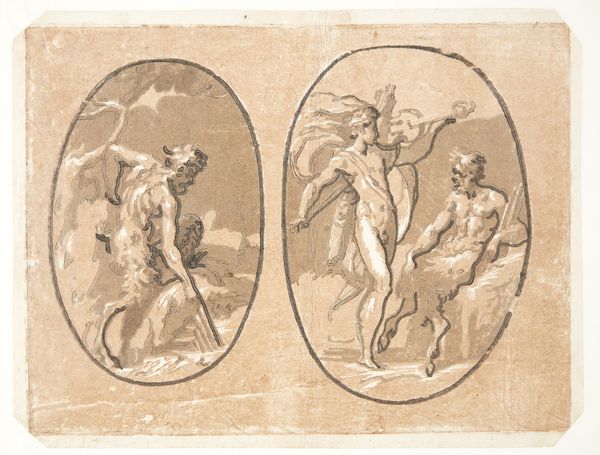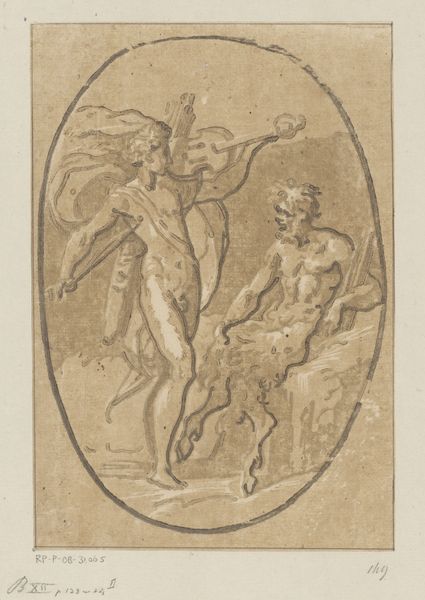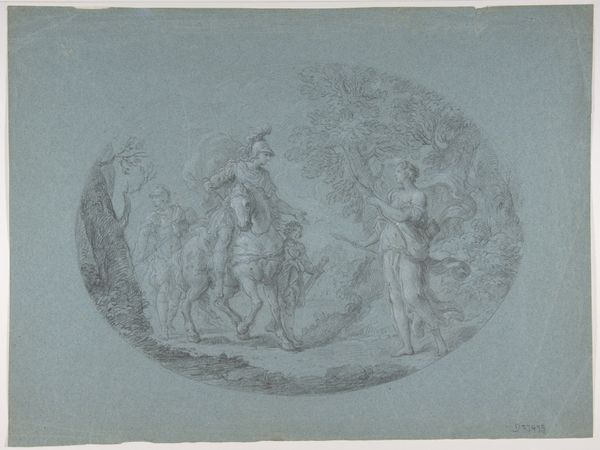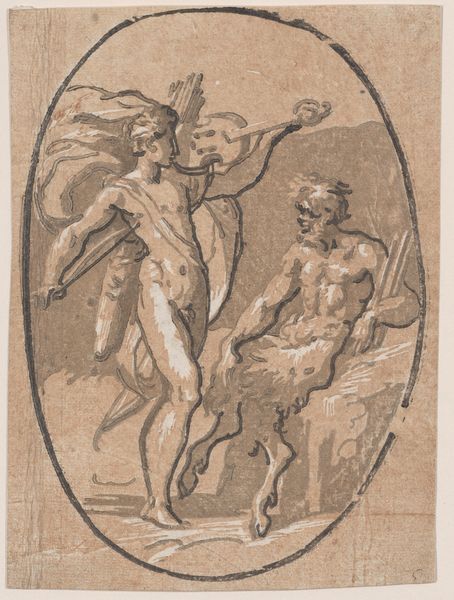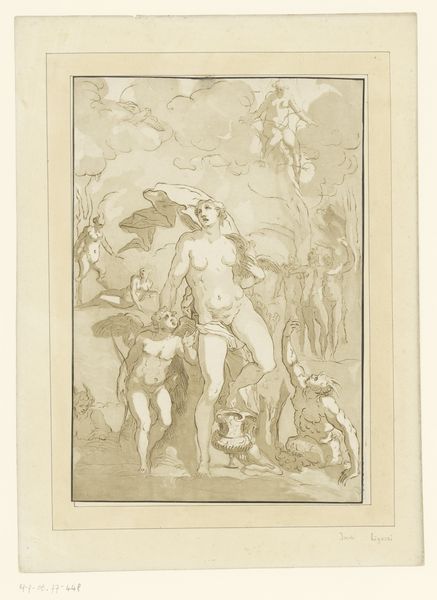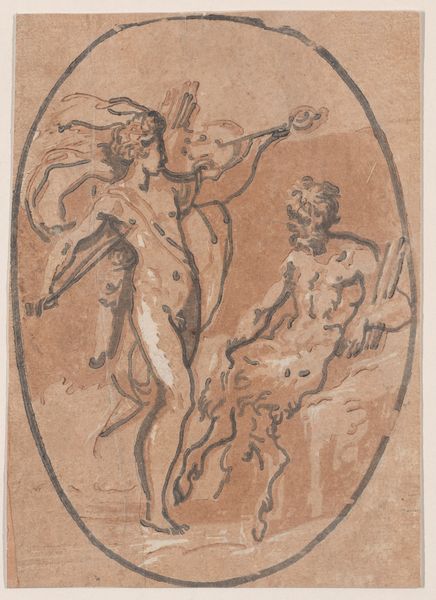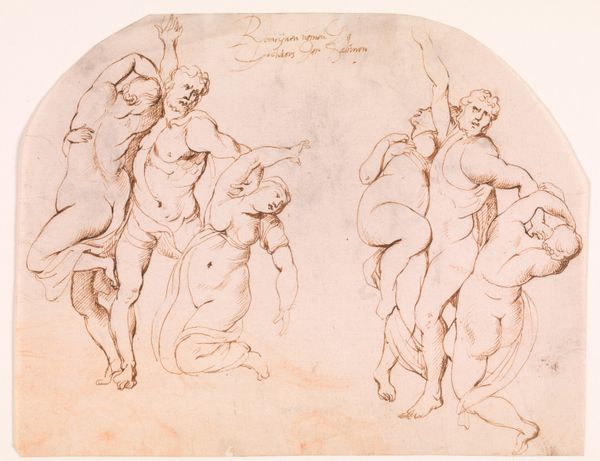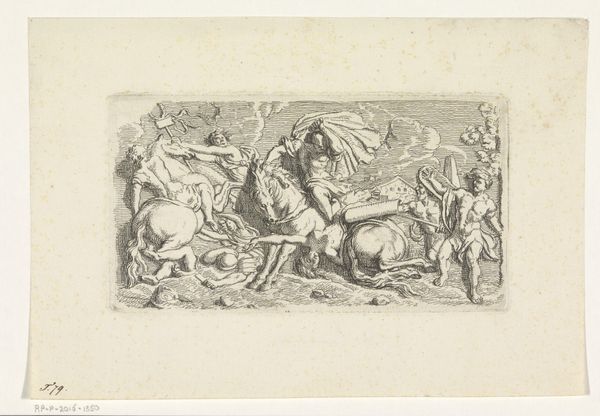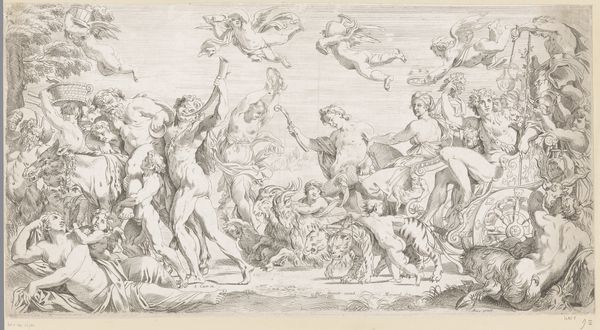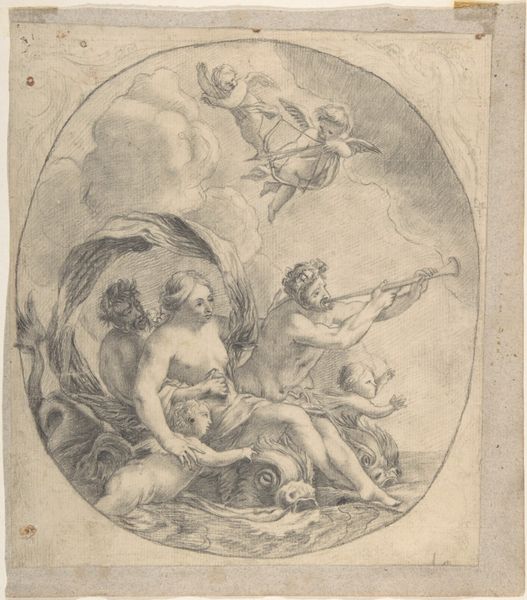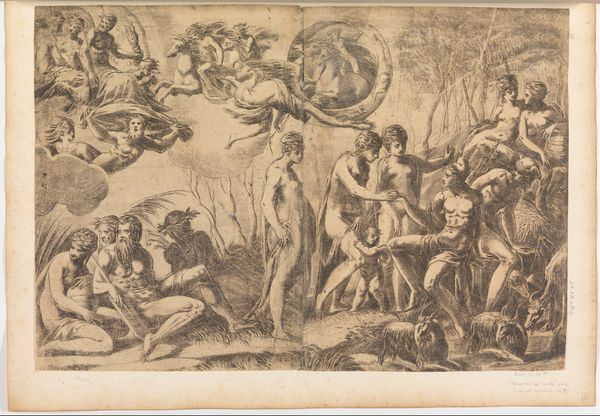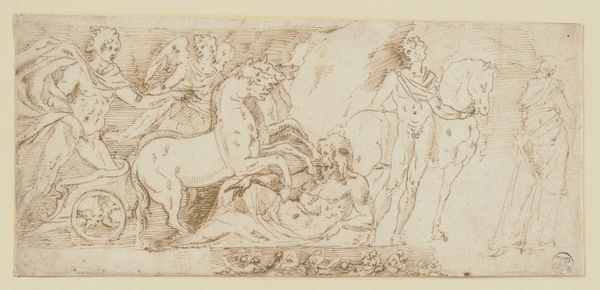
Marsyas vindt Minerva's panfluit en de wedstrijd tussen Apollo en Marsyas 1502 - 1532
0:00
0:00
Dimensions: height 234 mm, width 312 mm
Copyright: Rijks Museum: Open Domain
Editor: Here we have Ugo da Carpi's "Marsyas vindt Minerva's panfluit en de wedstrijd tussen Apollo en Marsyas," created with ink on paper sometime between 1502 and 1532. The contrasting ovals are quite striking. What do you see in this work? Curator: Immediately, I see a representation of power dynamics playing out within the established structures of mythology. The tale of Marsyas versus Apollo is more than just a music competition. It’s about the hubris of challenging authority and the violent suppression of the 'other' by dominant cultural forces. Look at how Apollo is depicted—radiant, youthful, unquestionably divine. Editor: And Marsyas? Curator: Marsyas is often portrayed as a satyr, representing untamed nature and raw emotion. His challenge to Apollo is interpreted not just as a musical contest, but as a challenge to the established order, to the patriarchal structures represented by the Olympian gods. What do you think this tells us? Editor: I suppose that seeing it that way, it is almost about social hierarchies. I mean, they're being established and protected, but also sometimes contested... Curator: Precisely. Da Carpi isn’s simply illustrating a myth; he's presenting a moment laden with political and social commentary, especially considering the time period in which he was working. What's implied by his depiction, given the potential censorship of the era? Editor: So, even mythological subjects became ways to comment on contemporary society? I guess you're encouraging me to think about how these historical narratives resonate even today. Curator: Indeed. This image prompts reflection on power, privilege, and the voices that are silenced in the pursuit of dominance, whether artistic, political, or social. This isn't just ancient history; these struggles continue to shape our present. Editor: I never considered the artwork’s relevance to current power structures before. Thank you.
Comments
No comments
Be the first to comment and join the conversation on the ultimate creative platform.
